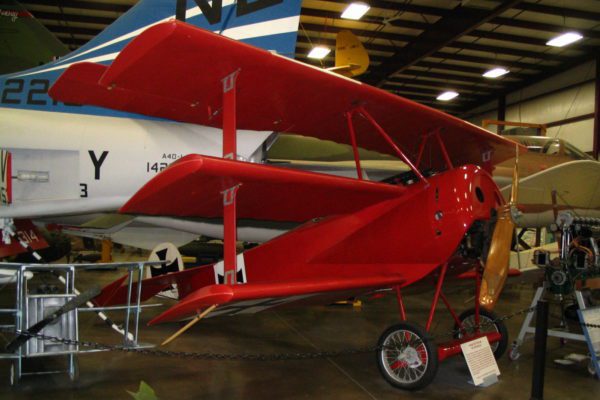
Fokker Dr.1
- : Germany
- : 1917
- : Le Rhone or Oberursel
- 110
- 23 ' 7"
- 102 mph (164 km/hr)
- 1291 lbs (586 kg)
- : On Loan
- : Reproduction
The Fokker Dr.I combined excellent maneuverability with a high rate of climb. It was favored by Manfred von Richthofen, and Werner Voss, two of Germany’s legendary fighter pilots. Both lost their lives in this type of aircraft in two of the most talked about air battles of the war.
The Dr.I was inspired by the success of the Sopwith Triplane which entered combat in the Spring of 1917. Looking to create a rugged and maneuverable fighter, Fokker’s Reinhold Platz developed a triplane that featured a steel tube fuselage and cantilever wings, which did not require external bracing. This wing design was a tremendous breakthrough in aircraft development. However, many triplanes suffered wing failures in flight, resulting in fatal crashes. The design was slightly modified, but evidence indicates the failures were caused by poor workmanship – insufficient varnish resulting in moisture absorption and deterioration of the wooden wings.
This example was built by Norman Hartman and was purchased by Cole Palen in the early 1970s. The machine was placed on static display at the Aerodrome until it was loaned to the New England Air Museum in Windsor Locks, CT.
Click for more information about the Fokker Dr.1
